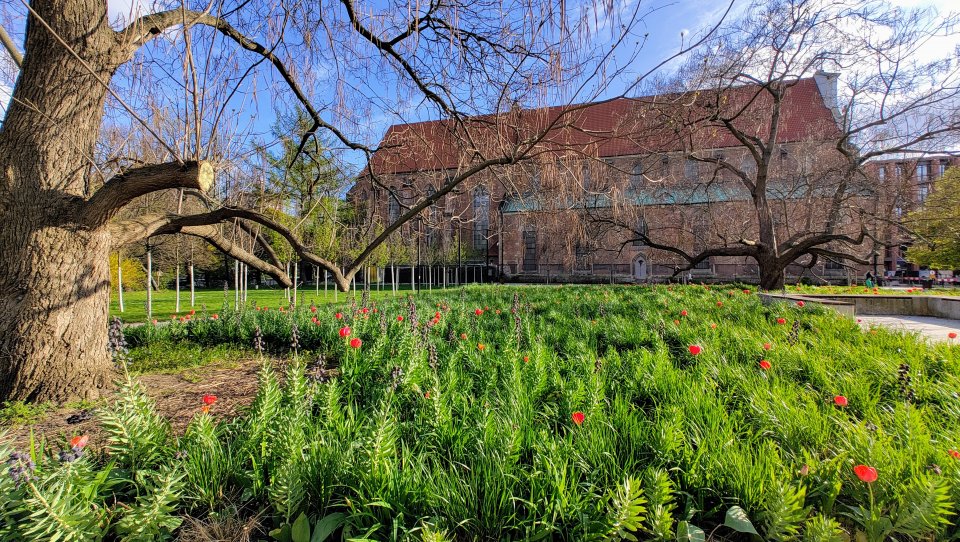
On 22 March and 10 May 2024, Wroclaw’s NBS trail was organised. The purpose of the two site visits was to familiarise the members of the LIFECOOLCITY project team with the live examples of Wroclaw's NBS that were selected in the process of creating the NBS catalogue.
The ambition of the project ‘Using remote sensing to manage the blue-green infrastructure of cities for climate change adaptation’ (LIFECOOLCITY) is to support the management of blue-green infrastructure in 10,000 cities in the European Union, through the implementation of innovative systems using GIS (geographical information systems) and remote sensing (satellite and aerial imagery). The aim of the activities is to strengthen the adaptive capacity of cities to the effects of anthropogenic climate change, thus bringing them closer to the pattern of smart cities of the future.
Wroclaw will be the first test city of the system within the LIFECOOLCITY project. Its implementation will help to identify Wroclaw's needs in the context of greenery. The project will develop a programme to analyse environmental data and support decisions on the maintenance and creation of new green spaces.
The visits, attended by representatives of business, NGO, academia, the Municipality of Wroclaw and the Urban Greenery Management, were an opportunity to present the best NBS practices, used as a tool in climate change adaptation.
The visits enhanced the knowledge of the LIFECOOLCITY’s project partners on the role of the NBS who learned about the encountered challenges during the process of implementation of these solutions. This allowed them to see which solutions work best, and which will help them to better design an NBS management tool in the city, supporting urban decision-making on the maintenance and creation of new green spaces.
One of the projects envisaged greening of concrete New Market Square of almost 10,000 square meters, which is a historic space. Its structure has been transformed.
The scope of work in that place included partial demolition of the pavement, improving the insulation in the existing underground car park and building new technological layers based on a green roof system. 63,000 plants were planted, including trees, ferns, grasses, bulbous plants, perennials and climbers. New places to relax among the greenery were created.
Wroclawianki Square is another example of an NBS, where thanks to unsealing the paved area and planting new greenery, a beautiful green space of more than 6,000 square metres has been created in the city centre in the place of a car park. The aim is to mitigate climate change, offset the urban heat island effect and manage rainwater.
In that place, fragments of former Wroclaw buildings were left. The whole area has been named after the many Wroclaw women who have made their mark on Wroclaw's history.
The Orlat Lwowskich square was stripped of the paved surfaces and the NBS were implemented, including 1,800 shrubs, as well as 1,700 perennials. The creation of a rain garden allowed rainwater to be retained from the surrounding paved surfaces and use it to water the drought-tolerant greenery.
The idea of the Krzycki Park NBS was to complement the park with water retention solutions. As a result, sections of ditches were cleared, spillways with accompanying infrastructure were created, and retention plants and trees were planted. Activities also included the development of Krzycki Park by shaping greenery and installing elements of small architecture.
The chosen solutions are typical to our climate and work in urban conditions in Poland, including Wroclaw.
